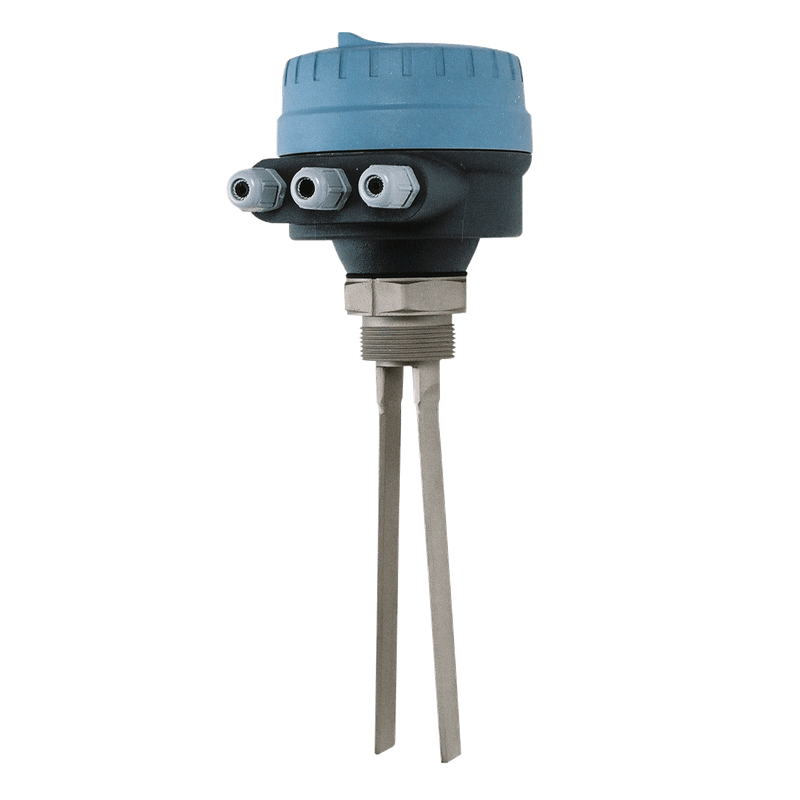
#Fork type level switch series
The CleverLevel level switch series is measurably better than the widely used vibrating fork-based level switches. You can read more in our article about how the CleverLevel level switch benefits the brewing and distilling industry. The use of high quality, stainless steel and PEEK materials that are approved for food contact enables it to meet the requirements of the food and beverage and pharmaceutical industries. The CleverLevel level sensor is also a clean solution for when hygiene is a must.

Variants for optimum process adaptation.Here are just some of the examples where the CleverLevel excels: It can master the challenges of practically all applications. When it comes to efficient and accurate level detection, this sensor meets the requirements of process automation and also the regulations for mobile systems and ships. The CleverLevel is the perfect all-in-one solution for a wide range of industry applications. Highly efficient and flexible due to design variants.Minimised downtime due to process stability.Works with all media regardless of medium.The CleverLevel level offers benefits to suit all, including the following:.The requirements of level detection sensors are as diverse as the media they are supposed to be analysing and applications vary from dry running protection for pumps to reliable overfill protection and/or the detection of leaks. Regardless of type, consistency, or viscosity, the CleverLevel level switch has the capability to meet all requirements. Using CleverLevel for level detection - the benefits In turn, this enables the suppression of adhesive substances on the sensor tip or foam and the high level of sensitivity that is created over a large measurement range for the dielectric constants, enables limit detection for all sorts of adhesive materials, powders, granulates and liquids that alternative level switches, using vibrating forks, cannot handle. Through this method, the sensor ultimately relies on the analysis of the resonance circuit affected by the dielectric constant of the medium below the sensor tip. CleverLevel level sensor vs vibrating forksįirstly, where the CleverLevel stands out from the widely-used level switch devices is through the use of frequency sweep technology. To find out more, we spoke to their UK Product Market Manager for Position & Advanced Sensors, Amit Chohan. Leading sensor and measurement device specialists, Baumer has developed the CleverLevel level sensor, a convenient, precise, easy, and maintenance-free solution that will take you into a new era of level detection technology.

The use of traditional level switches that have vibrating forks can often lead to measuring errors, as the materials are prone to stick to the forks. Shown below for a better understanding.Accurate and efficient level detection is often an incredibly important factor in processes that work with liquids and pasty materials. The natural frequency of tuning fork increases with increase in the length of tines.Ī comparison of the tuning forks vis-a-vis their performance and end-use has been Margin decreases with increase in sensitivity. In vibrating fork for solids, changing the sensitivity may affect the hysteresis for the sensor. This prevents frequent toggling around the This can cause fluctuations in both the amplitude and frequency of operation for the tuning fork.įor reliable level sensing a switching hysteresis is maintained around the swiching point. Turbulence can be caused by flow of material or due to an agitator or stirrer inside the silos. Switching Point Hysteresis for Point Level Switching Vibrating Fork Level Sensor: Factory Calibration


The threshold frequency is set to match the natural frequency of tuning fork type level switch under The natural frequency of oscillation for the tuning fork level switch decreases as it covered Frequency of operation: Liquid Level Sensor.Goes below a set threshold, the onboard electronics causes a change to the outputs(Relays/ PNP). The amplitude of oscillation of tuning fork level switch dampens. Amplitude of vibration: Vibrating Level Switch for SolidsĪs the material level increases and comes in contact with the Vibrating Fork tines,.Given parameters depends upon type of application media. Natural frequency and detecting the change of frequency and amplitude in the presence of application media. The working principle of vibrating fork level sensor is based on vibrating a tuning fork sensor continuously at its


 0 kommentar(er)
0 kommentar(er)
